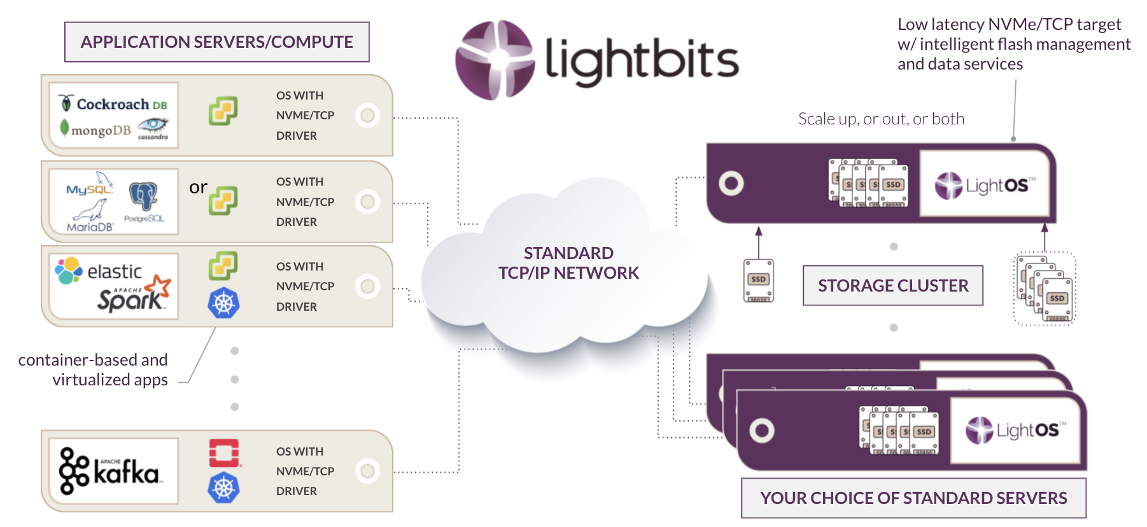Looking to dip your toes in the water with NVMe™ over TCP, but not sure where to start? Perhaps you want to learn more about its key benefits, and why you should think about it. Maybe your desire is to get out of the SATA and SAS market, maybe you’re paying too much in maintenance…or maybe your applications crave bandwidth and low latency beyond your present capabilities?
Well, whatever you’re looking to do, look no further, because Lightbits can help!
NVMe Storage Basics
Let’s first identify the basics before we get started. NVMe is a drive protocol like SATA and SAS; however, at this time it is dedicated to supporting ultra fast, low latent flash media. Disk protocols are gauged by the ability to process concurrent commands on your storage media, or in storage speak, “queues”.
SATA and SAS both carry a single queue capability, but differ in the number of commands per queue: 8 for SATA and 128 for SAS. NVMe changes the way data is accessed by offering 65,535 queues and 65,535 commands per queue, a drastic increase in the ability to concurrently access data. This change in protocol and queues allows for millions of IOPS, as well as microsecond latency to your applications.
NVMe Storage Choices
One decision that has a major effect when moving to NVMe is how to access the NVMe SSD disks themselves. Do you want DAS, a manufacturer’s proprietary hardware, an appliance, or an edge hardware vendor of your choice (Dell/HPE/Lenovo/Intel) with tomorrow’s ingenuity built right in? Continuing with the technical decisions, is your organization more comfortable with RAID or erasure coding? Do you want nodes of resilient storage that have self healing and offer millions of IOPS? How about scale up and scale out when you need to expand your storage footprint or refresh it in 3-5 years?
You’ll also have to think about how you want your data served. Is your organization Fibre Channel savvy, or do you prefer the TCP/IP route? NVMe can be served both ways with similar results from a performance perspective. Fibre Channel SAN may be lossless, but it comes with the cost of RoCE hardware and a maximum of 32 Gbps on the switches. LAN leverages your existing TCP/IP switches skyrocketing past 100 Gbps speeds, which allow for much more bandwidth than traditional arrays.
When looking at new technology like NVMe, customers are asking themselves: what is today’s pain point and what problem are we looking to solve? The concepts that are carried into the design and development phases of NVMe deployment will have a broad influence in the application space for years to come. Web scale applications in all industries crave performance; however, bringing that to your customers and end users flawlessly can be a daunting task. Building a hyperscale footprint in your data center using NVMe commodity servers, leveraging your organization’s existing LAN with software defined storage is the footprint required to empower customers looking to get started with NVMe.

Our goal at Lightbits is to help you with this journey, with the first commercially available NVMe over TCP software defined storage platform. With the benefits gained from the team that helped define the standard, Lightbits wants your organization to have ultimate control over your storage infrastructure. With Lightbits, you can leverage the server hardware you use today, along with the network provider you’ve had for years. Lightbits continues to work tirelessly to commit code to https://nvmexpress.org/, and help advance the powerful capabilities of the NVMe protocol.
All it takes to get the journey started is a little hardware and a few server licenses.
So let’s get things started! Ping us at sales@lightbitslabs.com for a guided tour of NVMe over TCP for your web-scale application stack today.
